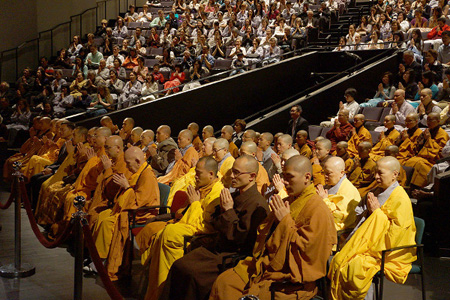On the basis of archaeological evidence, legends and historical sources, a broad overview of Vietnamese history reveal that Vietnam had its first state, Van Lang, between the seventh century BC and the third century BC. The rulers of this state, known as the Hung Kings, had a lineage that can be traced through eighteen successions. The last of the Hung Kings was (defeated by Thuc Phan, the leader of Au Viet in the North of Van Lang, who combined the two territories and established himself as supreme overlord. He adopted the royal title of An Duong Vuong and named the country Au Lac.
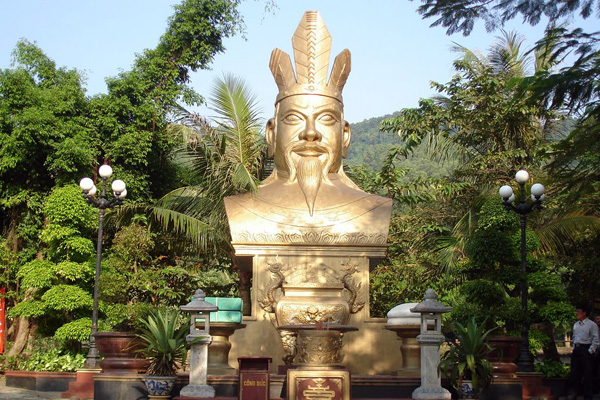
However, in 176 BC, Vietnam was invaded by Zhao Tuo troops of the Han Chinese Empire, beginning the first period of Chinese domination of Vietnam which lasted for 1,000 years. During the 1,000-year period, there were numerous resistance wars against the Chinese overlords, starting with the revolt led by the Trung Sisters (40-43 AD). This was followed by the revolt led by Trieu Thi Trinh (in Thanh Hoa against Eastern Wu in 248). Ly Bi led a revolt in Sem Tay against the Liang Dynasty in 542 (with Ly Bi proclaiming himself Emperor Ly Nam De of Van Xuan). There was then a revolt by Trieu Quang Phuc against the Liang Dynasty, proclaiming himself Trieu Viet Vuong (548-571). Another revolution was led by Mai Thuc Loan in 772 (also known as Mai Hac De of Ha Tinh) against the Tang Dynasty. In 791, Phung Hung (known as Bo Cai Dai Vuong) also led a revolt against the Tang Dynasty; and finally, a revolt was led by Khuc Thua Du in Hai Duong against the Tang Dynasty from 905 to 907. However, it was the successful revolt at the battle of Bach Dang, led by Ngo Quyen against the Southern Chinese in 938 which ended one thousand years of Chinese domination; Vietnam regained independence, opening up a period of Vietnamese control and development.
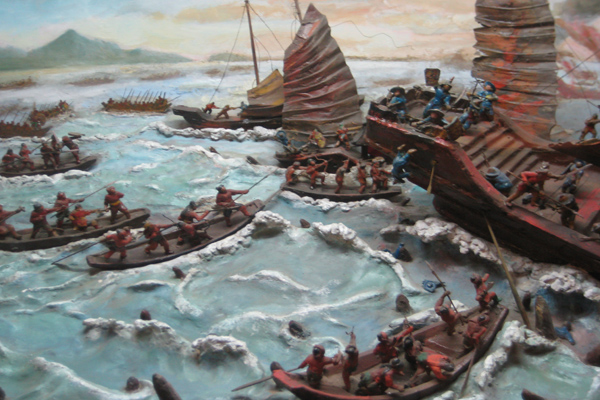
Buddhism came to Vietnam during the period of Chinese occupation, quite early in Buddhist history. In fact, historians believe that the entry of Buddhism to Vietnam can be traced back to the beginning of the first century AD. Chinese history documents that at that time, while Southern China did not yet know about Buddhism, in Luy Lau or Lien Lau (present-day Thuan Thanh, Bac Ninh, Vietnam), there was a Buddhist center which developed quite vigorously, and can be favorably compared with the center in the Eastern Han capital of Luoyang, built to the south of the Huanghe River (present-day Hunan, China), and Pingcheng, the Chu capital, at the lower section of Changjiang (present-day Jiangsu, China). According to the Essay on Truth - Illusion by Mou Zi, at the end of the second century, there was a shanga of 500 monks.
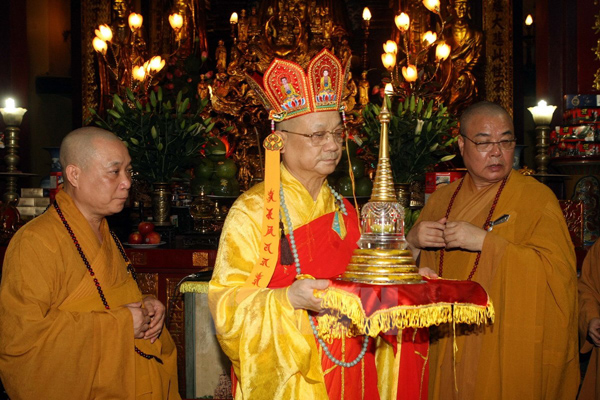
Some researchers believe that in the third century BC, Emperor Asoka, who united most of India, established an official policy of encouraging Buddhist missionary activities in places such as Myanmar, Thailand and Vietnam. However, there is no clear historical evidence to confirm or refute this. From the evidence at hand, the understanding is that Buddhism was introduced to Vietnam mostly by merchants trading along ocean trade routes. Indian merchants often traveled in the company of Buddhist monks, who would pray for peace, a smooth passage on the sea and good trade. However, it can be confidently claimed that monks on Indian trading ships probably arrived in Vietnam during the first century AD, although it is not until the end of the second century and early third century when passenger lists become available and the names of monks appear in the margins. The names that appear identify some of the very first people to bring Buddhism to Vietnam. Notably, two monks named Marajivaka and K'sudara came to Vietnam at the end of the second century AD, before continuing on to China. K'sudara remained in Vietnam for an extended period of time, whereas Marajavaka continued the journey to Luoyang. These men are considered to be two of the most important figures in the early period of Buddhist penetration in to Vietnam.
K'sudara's religious activities in particular are connected with a famous legend concerning Lady Man Nuong and the veneration of Tu Phap (Four Dharmas): Phap Van (Cloud), Phap Vu (Rain), Phap Loi (Thunder) and Phap Dien (Lightning). The metaphor of a thunderstorm would have been very clear to people living in an agrarian society, such as that which existed in the Red River Delta.
Other Indian monks came in the wake of the two missionaries mentioned above, including K'ang Seng Houei and Kalaruci (in the mid-third century) and Dharmadeva (about the fourth century). K'ang Seng Houei was from Sogdiane and born in Giao Chi. At the age of ten, he left home to become a monk and in 247 arrived in Jiangdong, China to spread the Buddha's teachings. He was an erudite man, good at both Sanskrit and Chinese. He edited and interpreted many valuable Buddhist books, such as Luc do Tap kinh and Tieu pham Bat nha. His books were mostly about Ch'an Buddhism. Many researchers believe that he was the first to bring Ch'an Buddhism to Vietnam. Kalaruci was from Tukhary and went to Giao Chau and Guangzhou to lead a religious life and to spread the Buddha's teachings. In Giao Chau,supported by the local monk Dao Thanh, Kalaruci translated the work known in Vietnamese as Phap Hoa Tam muoi, one of the key texts of Mahayana Buddhism, which gave instructions to facilitate the practice of Buddhism. The third Indian monk in the group, Dharmadeva, went to Giao Chau at the end of the fifth century and then continued on to China. While in Vietnam, he translated many books, including Nat ban lusn (Essay on Nirvana).
During this period, Chinese missionaries also came to Vietnam, including Mou Zi (at the end of the second century), Du Phap Lan and Du Dao Toai (both mid-fourth century). Notable among them, the monk Mou Zi became a teacher of great influence with his outstanding Essay on Truth - Illusion. The book consists of 37 questions and answers about Buddhism, raised by Confucianists and Taoists.

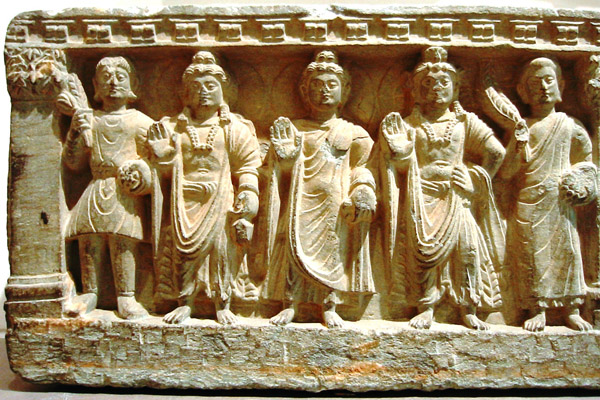
Therefore, it can be claimed with a high degree of certainty that by the fifth century AD Buddhism had established a strong presence in Vietnam. Many famous Vietnamese monks became prominent such as Hue Thang, Dao Thien, Dao Cao, and Phap Minh. Hue Thang (440-479) became a follower of Dharmadeva and was later invited to Pingcheng, China, to teach and thus, also became a contributor to the development of Buddhism in China. Dao Thien (457-527), who had many disciples, became famous for his knowledge of the Vinaya, as well as leading an exemplary life. He was also invited to China to teach Buddhism. The two well-learned Vietnamese monks Dao Cao and Phap Minh, active during the mid-fifth century, were famous for their six letters in which they discussed Ch'an Buddhism with Li Miao - a Chinese Confucian scholar.
In the history of Buddhism in Vietnam, the period from the sixth century to the tenth century was a time of teaching during which more and more influence came from China. The result was that Chinese Ch'an Buddhism established a strong presence In Vietnam. Specifically, the name of the Vinitaruci should be mentioned. Although he was Indian by origin, he traveled to Chang-an in China in 562 to lead a religious life. However, at that time, Chinese Buddhism was experiencing a hard time in its development so he went to Ye District (China) and became a disciple of Seng Can, the Third Patriarch of the Chinese Ch'an Sect (which by that time had a tradition of "Six Patriarchs," "Five Schools" and "Seven Branches"). After studying Ch'an from Seng Can, Vinitaruci came to Vietnam around 580 and stayed at the Phap Van Pagoda (in present-day Bac Ninh) and became the first Ch'an Master of Vietnamese Ch'an Buddhism. The Vinitaruci Ch'an school in Vietnam had 19 successions with 29 patriarchs as follows:
- Patriarch: Vinitaruci (died in 594)
- Second succession: Phap Hien (died in 626)
- Third succession: Hue Nghiem
- Fourth succession: Thanh Bien (died in 686)
- Fifth succession: unknown
- Sixth succession: unknown
- Seventh succession: Long Truyen
- Eighth succession: Dinh Khong (died in 808) and two unknown people
- Ninth succession: Thong Bien and two unknown people
- Tenth succession: La Qui An (died in 936)
- Eleventh succession: Thien Ong (died in 979), Sung Pham (died in 1087) and two unknown people
- Twelfth succession: Van Hanh (died in 1018), Dao Hanh (died in 1112), Dinh Tue , Tri Bat (died in 1117), Thuan Chau (died in 1101) and two unknown people
- Thirteenth succession: Hue Sinh (died in 1063), Thien Nham (died in 1163), Minh Khong (died in 1141), Ban Tinh (died in 1140) and two unknown people
- Fourteenth succession: Khanh Hy (died in 1142) and four unknown people
- Fifteenth succession: Phap Dung (died in 1174), Gioi Khong and one unknown person
- Sixteenth succession: Chan Khong (died in 1100),Dao Lam (died in 1203) and one unknown person
- Seventeenth succession: Dieu Nhan (died in 1113), Vien Hoc (died in 1136), Tinh Thien (died in 1113) and one unknown person
- Eighteenth succession: Vien Thong (died in 1151) and one unknown person
- Nineteenth succession: Y Son (died in 1213) and one unknown person.
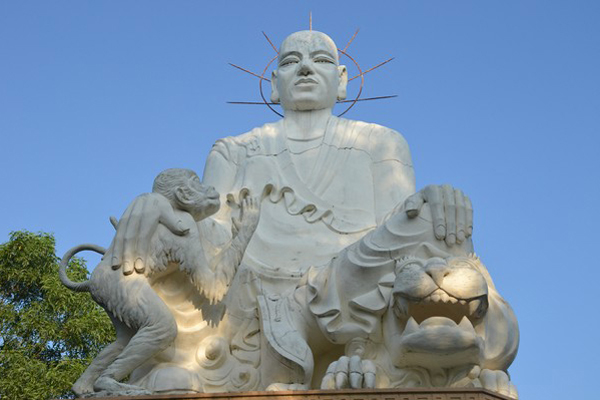
Concurrent with the influence of the Vinitaruci Ch'an school, other Buddhist missionary delegations were also active in Vietnam. The first delegation consisted mainly of Chinese monks, including Buddhist Master Ming Yuan from Yizhou (present-day Xichuan), Ch'an Master Hui Ming from Jingzhou (present-day Hubei), and Ch'an Master Wu Xing also from Jingzhou. The members of the second delegation were Buddhist Master Tam Run and Buddhist Master Zhu Hong from Luoyang, and the monk Sanghavarma from India. However, the third delegation is especially notable because it included six Vietnamese monks - the Ch'an Masters Ky Van and Dai Thang Dang, and Buddhist Masters Giai Thoat, Khuy Sung, Hue Diem, and Tri Hanh.
During the sixth, seventh and eighth centuries, Vietnamese Buddhism maintained popularity. In the mid sixth century, King Ly Nam De (Ly Bi) had a large pagoda built in Yen Hoa, which was called Khai Quoc (National Founding) and would Liter become a prosperous Buddhist center in the capital city. Many pagodas were built across the country from Tuyen Quan to Nghe An. (At that time, Nam Viet was under the domination of the Tang Dynasty. It was then named An Nam, or Pacified South, and divided into 12 districts.) Many famous Vietnamese Buddhist monks emerged. Ch'an Master Phap Hien (?-626) came from Chu Dien (present-day Gia Lam, Hanoi ). He was accepted by Vinitaruci as a disciple at the Phap Van Pagoda. After he had been certified by his teacher through "mind-to-mind transmission," Phap Hien started his mission as a preacher and adopted up to 300 disciples. He became so well-known that the Chinese Governor in Giao Chau and Buddhist Master Dam Thien called him a "living Boddhisattva" in their joint letter to the Chinese King Sui Gao Fu.
Brilliant Vietnamese Buddhist monks were invited by the rang Kings to China to teach and exchange writings with Chinese poets and writers. Noteworthy among them were Buddhist Masters Phung Dinh, Duy Giam, Thuong Nhan Vo Ngai, and Ch'an Master Nhat Nam. In the late seventh century, Yang Ji Yuan, a great Chinese poet, wrote the following verses as a gift for Buddhist Master Phung Dinh from Vietnam:
Your native land, Nam Viet, is thousands of miles away
Where white clouds float
No chanting prayers at the Heaven Gate.
The immense sea is full of fragrant flowers Storks are mirrored in silver waves And imposing citadels with palaces Here, from Chang-an one will miss Bell ringing in Giao Chau at mid-night.
In 820, two hundred years after the Vinitaruci Ch'an school, the second major Ch'an school came to Vietnam, adhering to the Chinese Wu Yan Tong's Ch'an school. Wu Yan Tong was a native of Guangzhou and lived with the community at the Shuanglin Pagoda, Zhejiang. He was not a man of many words, but a knowledgeable man. Thus, his name means "a knowledgeable but taciturn man." In 820, he came to Vietnam; his residence was at the Kien So Pagoda, now within greater Hanoi. He exercised the "mind-to-mind transmission" ritual with his disciple, Lap Duc (the resident superintendent of Kien So Pagoda before his arrival). Wu Yan Tong's Ch'an school, with its orientation to the teaching in China, differed from Vinitaruci's teachings influenced by India, and focused largely on theories of Truth exemplified in concepts such as "Buddhahood," "life-and-death" and "suchness of existence." The Wu Yan Tong's Ch'an school had 16 successions with 40 patriarchs:
- Patriarch: Wu Yan Tong (died in 826)
- Second succession: Cam Thanh (died in 860)
- Third succession: Thien Hoi (died in 900)
- Fourth succession: Van Phong (died in 950)
- Fifth succession: Ngo Chan Luu (died in 1011) and one unknown person
- Sixth succession: Da Bao and one unknown person
- Seventh succession: Dinh Huong (died in 1050), Thien Lao and Bao Hoa
- Eighth succession: Vien Chieu (died in 1090), Bao Tinh (died In 1034), Minh Tam (died in 1034), Quang Tri (died in 1090), Ly Thai Tong (died in 1028), and Minh Hue.
- Ninth succession: Thong Bien (died in 1134), Man Giac (died in 1096), Ngo An (died in 1090), and five unknown people
- Tenth succession: Dao Hue (died in 1172), Bien Tai, Bao Giam (died in 1173), Khong Lo (died in 1141), Bao Tinh (died in 1177) and three unknown people
- Eleventh succession: Minh Tri (died in 1190), Tin Hoc (died In 1190), Tinh Khong (died in 1170), Dai Xa (died in 1180), Tinh Luc (died in 1175), Tri Bao (died in 1193), Truong Nguyen (died in 1165), Tinh Gioi (died in 1207), Giac Hai, Nguyen Hoc (died in 1174) and two unknown people
- Twelfth succession: Quang Nghiem (died in 1190) and eight unknown people
- Thirteenth succession: Thuong Chieu (died in 1203) and six unknown people
- Fourteenth succession: Thong Thien (died in 1228), Than Nghi (died in 1216) and three unknown people
- Fifteenth succession: Tuc Lu, Hien Quang (died in 1221) and three unknown people
- Sixteenth succession: Ung Vuong (died in 1287) and six unknown people
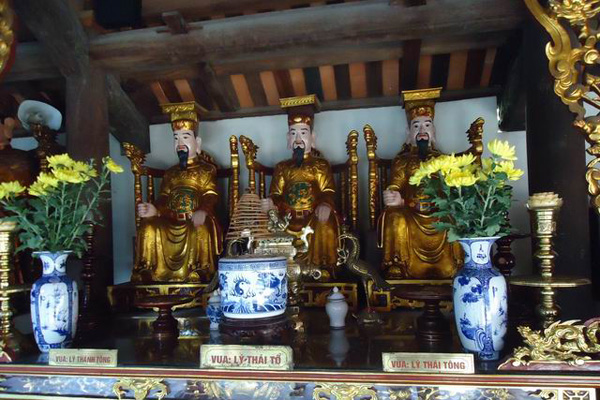
The Vinitaruci Ch'an school and Wu Yan Tong's Ch'an school produced many eminent monks and well-learned Buddhists. Some of them were famous in both Buddhist and national histories, such as the Ch'an Masters Cam Thanh, Phap Hien, Thong Bien, Dinh Khong and Thien Hoi (before the tenth century), and Ch'an Masters Do Phap Thuan, Ngo Chan Luu, Ma Ha, Thien Ong and Van Hanh (in the Dinh, Le, Ly, and Tran Dynasties).
It can be clearly seen from the discussion above that despite the social and political restrictions suffered under foreign domination, the first ten centuries following the introduction of Buddhism to Vietnam represent a period of vigorous growth of a distinctively local Buddhist tradition, and that during this time, Vietnamese Buddhism exerted a great influence and made many key contributions to the distinctive nature of Buddhism as a religious practice. Within the country, the socio-political and religious changes that resulted from this upsurge continued to gain strength, contributing to the push for independence and self-determination for the Vietnamese nation and people.

